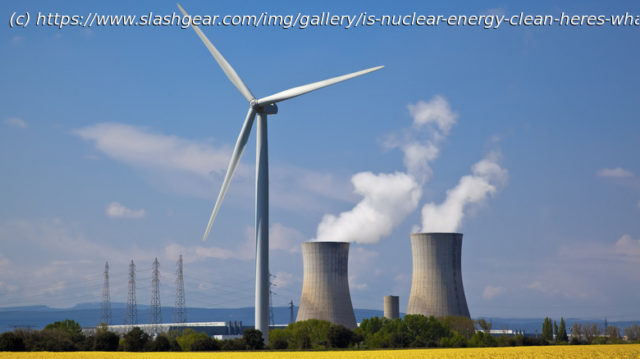Among the alternatives to fossil fuels, nuclear energy is a widely adopted method of generating power that is often misconceived as unsafe for the environment.
There’s a lot of debate throughout the world about how to transition away from fossil fuels and replace them with clean, renewable forms of energy. The average person may tend to gravitate toward solar and wind alternatives, thinking those are the only forms of clean energy that exist. Most might be surprised to know that nuclear energy can be considered clean energy, and it’s already widely used to power cities as well as keep military submarines running. When people hear the word „nuclear“, they may immediately think of „Oppenheimer“ or the Chernobyl meltdown. Weapons are only one application for nuclear energy, and nuclear power technology (and safety) has greatly improved since 1986.
No, nuclear power isn’t a renewable source like wind or solar since it uses a finite resource to generate heat, but the amount of fuel required to create nuclear fission is only a fraction of the amount needed to create the same amount of power in a coal or gas power station. Sweden recently changed its stance on nuclear power, using it as a reliable supplement to help the transition phase until more renewable sources are running and reliable.
The International Energy Agency (IEA) in 2022 said, „Nuclear energy can help make the energy sector’s journey away from unabated fossil fuels faster and more secure.“ It’s likely that nuclear energy will help various countries reach their goal of reaching net zero carbon emissions by 2050.Nuclear power plants don’t emit toxins
Nuclear power plants rely on a little process called nuclear fission. Where „fusion“ is combining two or more things together, „fission“ is splitting them apart. Nuclear fission is specifically the process of splitting the atom of a heavy element like plutonium or uranium , resulting in a chain reaction of hundreds of thousands of little explosions. It all starts with one particle sent to collide an atom: That collision splits the atom into two smaller atoms, which in turn releases an immeasurable amount of neutrons. Those neutrons collide with other atoms and do it all over again repeatedly. Don’t worry, those little explosions aren’t happening out in the open or even in those large smokestacks at nuclear power plants.
The atoms, the chain reaction they create, and the heat it all generates are contained within what’s known as a fuel rod. They’re submerged underwater to create steam, which is subsequently pushed through a pipe that directs it to a turbine. The steam pushes the turbine to spin and create kinetic energy. The turbine then transfers its kinetic energy to a connected generator, which uses that to generate electricity.






